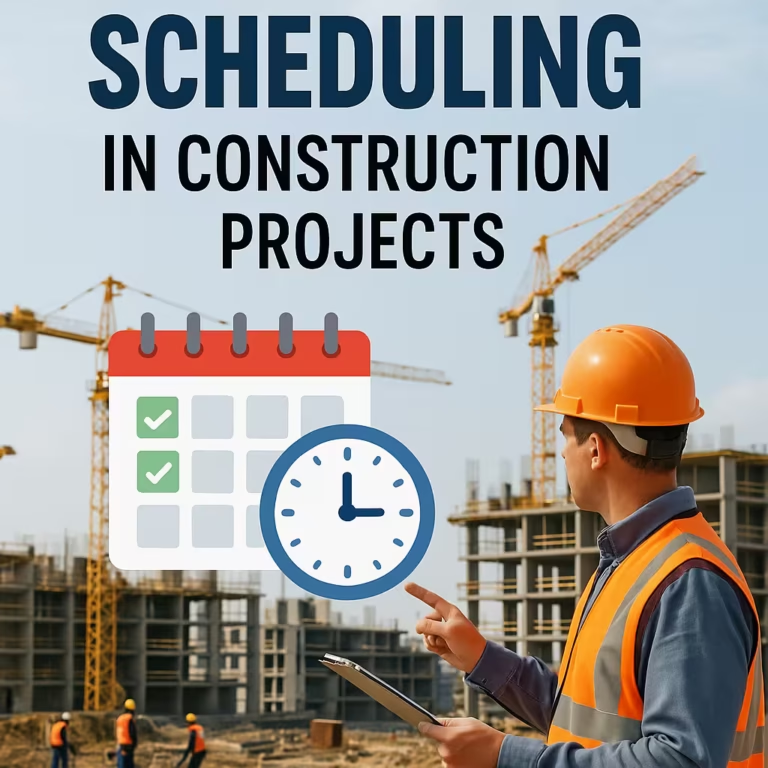How to Create a Successful Project Plan
How to Construct a Project Plan
In this Blog, I’m going to cover the steps, or the key components for how to create a project plan. So would you like to know what key things are done during planning, and what they’re for and why it’s important? If so, you’ve come to the right Blog. Stay with us.
Importance of Planning in Construction
Okay, so I love, love, love this topic, planning. Planning. Planning is the key to everything that we do in construction. In fact, in the book How Big Things Get Done? they say, from a statistical and historical standpoint, the projects that do well, have a plan using the right system, with a trained team that has experience and experimentation, and so this pre-construction duration before we actually go out there and do the work on site is absolutely key.
If you don’t, you will have really horrible numbers. Out of over 16,000 representative projects in the database, as referenced by the author of How Big Things Get Done, I think it’s 47.9% finished on budget. Only like 7.9% or I’ll just round up 8% of projects finished on budget, on time, and only one-half of a percent out of all 16,000 projects are on budget on time, as the owner wanted, and so we must do this.
Key Concepts of Planning
This Blog is not going to cover everything that you need to know about planning, but it will give you the key concepts and the things that you must remember. So stay with us. This is huge.
Macro Level Tact Plan
The first thing that we want to do is put together what’s called a macro level tact plan. Now, if you want to know what a tact plan is, you’re going to reference the book Tact Planning and then there’s a book called Tact Steering and Control. For the specifics of this, it’s not hard to learn, it’s not hard to use. And we have free templates on lean tact.com.
What we want to do is create in a time-by-location format. We want to create what’s called a macro level tact plan. This is going to show you the entire project strategy, all on one page. Because we have diagonal trade flow, good sequences, and interdependence, we are able to create or find out what the overall total project duration should be on this macro level tact plan.
Importance of Project Dates and Budget
When you’re doing your plan, you must have the right dates for procurement, you must have the right leveling and overall plan with your trade partners, and you must have the money. The oversight, the actual project management team will need to be allocated for this project. We will want the general conditions to reflect their salary or their general labor rate that we’re building the client for your general conditions. This is absolutely key.
Logistics Map
The second thing that we need to have here, in reference to our overall plan, is the logistics map. There are typically about six types by the time you get done. One is safety, another is wayfinding, mobilization, make-ready, superstructure, interiors and exterior, and then the closeout—at least six different types.
Your logistics is going to make sure that you understand things like where is the trailer going to be? Where is the laydown going to be? What kind of worker care do we need? Where is parking? How are we getting around the project site?
General Requirements and Logistical Support
General conditions are basically your staff for your project management indirects. Your general requirements are things like your toilets, site fencing, trailer—things that are not a part of the cost of doing the work but are for the logistical support of the entire project site.
Zone Maps and Zoning Strategy
Once you have the basics of your plan, another part of your macro low tact plan will also have your zone maps. If this is your building, what is the zoning strategy? Zone number one, two, and three, let’s say by floor, and this could be in an axonometric perspective as well. If you have a building, you need to understand the zoning strategy, how you’re going to break your building up.
Identifying Bottlenecks
Once you have your macro tact plan with your zone strategy, with the logistics, you’ll want to know, what are my trade bottlenecks, which you will see in the diagonal? Do I have a zone bottleneck inside any of the phases or anywhere on the project?
Advanced Work Packaging
The reason we need to know our trade and our zone bottlenecks is because there’s a really cool system called advanced work packaging. It’s not the typical oil and gas advanced work packaging, but it’s the idea of designing to the work package for the support of the install, and you do enough preparation to optimize the duration.
Importance of Design to the Work Package
When you have a trade bottleneck, specifically in this example, you will want to make sure that before you ever start the project that how you deliver, fabricate materials, and design to the work package is well-identified and intelligently designed to optimize the duration.
Zoning Strategies and Project Duration
We need to look at our zoning strategies. If you want to speed up your project, when you come between the macro and the norm—from your contractual promise to your production plan—you’ll want to get smaller zones, which will reduce your overall project duration and gain buffers in the system.
Gaining Buffers in the System
We will need buffers in order for us to be able to execute the project properly, to match and hit the target for our reference class, and to abate or mitigate risks in the overall strategic plan.
Conclusion
I hope you really enjoyed this. If you have any questions, please note them in the comments below. We’re also linking to the book Elevating Pre-Construction Planning so you can check it out in a highly visible format. We hope you’ve enjoyed this Blog!






